In today's ever-evolving financial landscape, the need for regulatory reforms has never been more pressing. As we navigate through complex economic challenges, understanding the implications of these reforms is crucial for both individuals and businesses alike. From enhancing consumer protection to promoting fair competition, these changes aim to foster a more resilient financial system. Curious to learn how these reforms can impact you? Read on to discover the key insights!

Specify purpose and context of reforms
Financial regulation reforms aim to enhance the stability and integrity of the global finance system, particularly in the wake of significant events such as the 2008 financial crisis. Implementing stringent measures can prevent systemic risks while promoting transparency and accountability among financial institutions, including banks and investment firms. Regulations designed under frameworks like the Dodd-Frank Act in the United States or Basel III globally focus on capital adequacy, stress testing, and risk management practices. This initiative seeks to protect consumers, promote economic growth, and maintain investor confidence in markets by establishing robust oversight mechanisms. In addition, these reforms respond to growing complexities in financial instruments, such as derivatives and high-frequency trading, ensuring that they align with contemporary risk landscapes.
Highlight key regulatory changes
Financial regulation reforms have introduced significant changes aimed at enhancing transparency and accountability within the banking sector. The implementation of the Basel III framework, which sets stricter capital requirements (minimum common equity tier 1 ratio of 4.5%) for financial institutions globally, aims to bolster financial stability. Moreover, the Dodd-Frank Act, established in response to the 2008 financial crisis, includes provisions such as the Volcker Rule, which restricts proprietary trading by banks to mitigate risk exposure. Enhanced reporting requirements under the Financial Stability Oversight Council (FSOC) now mandate regular stress testing of large banks to assess their resilience during economic downturns. Additionally, the Consumer Financial Protection Bureau (CFPB) oversees practices related to consumer credit, ensuring fair lending and transparency in financial products. These reforms collectively aim to create a more robust financial landscape, fostering trust and protection for consumers while mitigating systemic risks.
Emphasize compliance and enforcement
Financial regulation reforms are critical for ensuring a stable and transparent financial ecosystem. Compliance (adherence to laws and regulations) is essential for safeguarding investors and maintaining market integrity. Regulatory bodies, such as the Securities and Exchange Commission (SEC) and the Financial Conduct Authority (FCA), play a pivotal role in enforcing these regulations through rigorous oversight. Enhanced enforcement mechanisms, such as regular audits and increased penalties for non-compliance, are necessary to deter malpractice and promote adherence. The global financial crisis of 2008 exposed significant gaps in regulatory frameworks, prompting the need for reform. Effective compliance and enforcement strategies not only protect consumers but also foster confidence among market participants, ensuring a resilient financial system.
Detail stakeholder impact and benefits
Financial regulation reforms can significantly impact a diverse range of stakeholders, including investors, financial institutions, consumers, and regulatory agencies. Investors, such as hedge funds and pension funds, benefit from improved transparency and accountability, fostering trust in the markets. Financial institutions, including banks and credit unions, experience a clearer framework for compliance, reducing legal uncertainties related to regulatory changes. Consumers gain increased protection against fraudulent practices and better access to financial services, promoting financial literacy and inclusion. Regulatory agencies, such as the Securities and Exchange Commission (SEC) or the Financial Conduct Authority (FCA), enhance their oversight capabilities, leading to more effective enforcement of rules and regulations. These reforms aim to stabilize the financial system, minimize risk, and ultimately create a more resilient economy, as evidenced by improved credit ratings and investor confidence post-reform implementation.
Provide implementation timeline and support
Financial regulation reforms aim to enhance market stability and protect consumers from systemic risks in banking and investment sectors. The implementation timeline typically spans three phases: Phase One (Initial Assessment, 3-6 months), focusing on evaluating regulatory gaps and stakeholder input; Phase Two (Implementation Planning, 6-12 months), where detailed strategies include legal modifications, regulatory agency training, and technology upgrades; Phase Three (Monitoring and Evaluation, ongoing), ensuring adherence to new regulations through audits and data analytics. Support systems involve training programs for financial institutions' staff, public awareness campaigns identifying consumer rights, and dedicated channels for whistleblowers to report violations. In addition, regular feedback mechanisms facilitate ongoing improvements to the regulatory framework, adapting to evolving financial landscapes.
Letter Template For Financial Regulation Reforms Samples
Letter template of request for more information on financial regulation reforms.
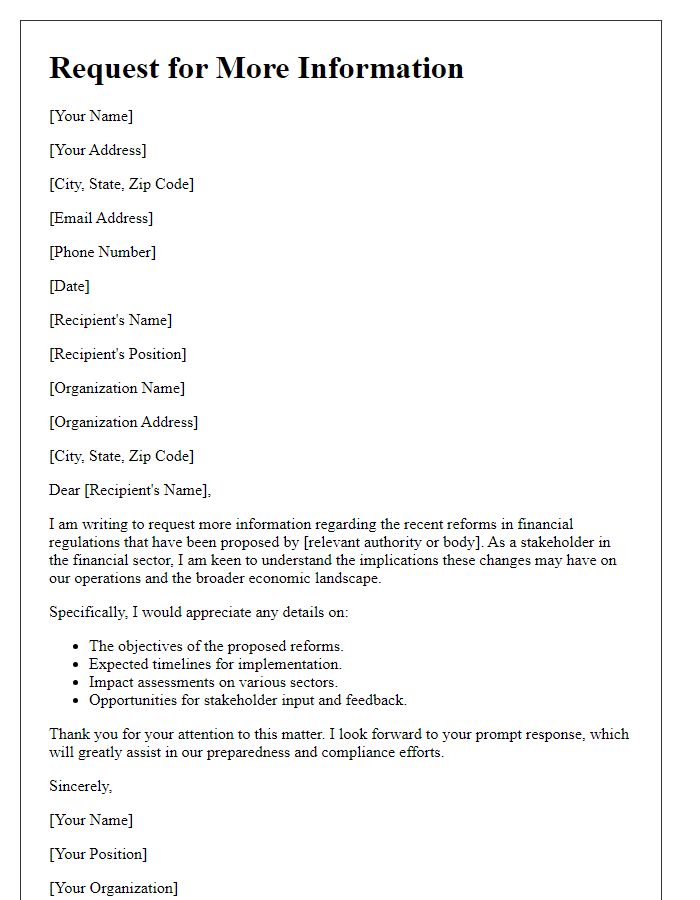
Letter template of suggestion for improving financial regulation reforms.
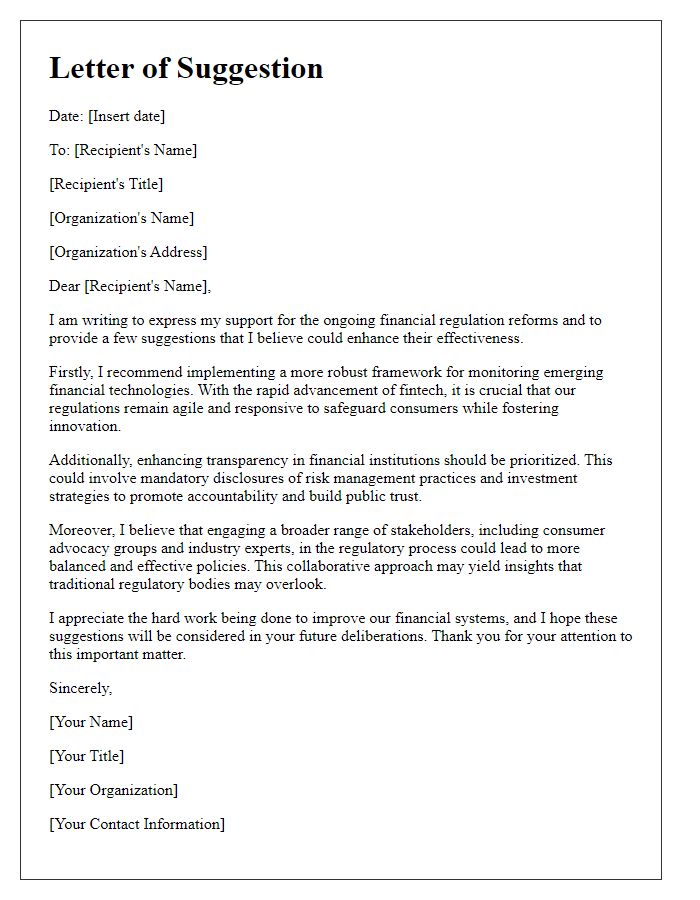
Letter template of personal impact statement regarding financial regulation reforms.
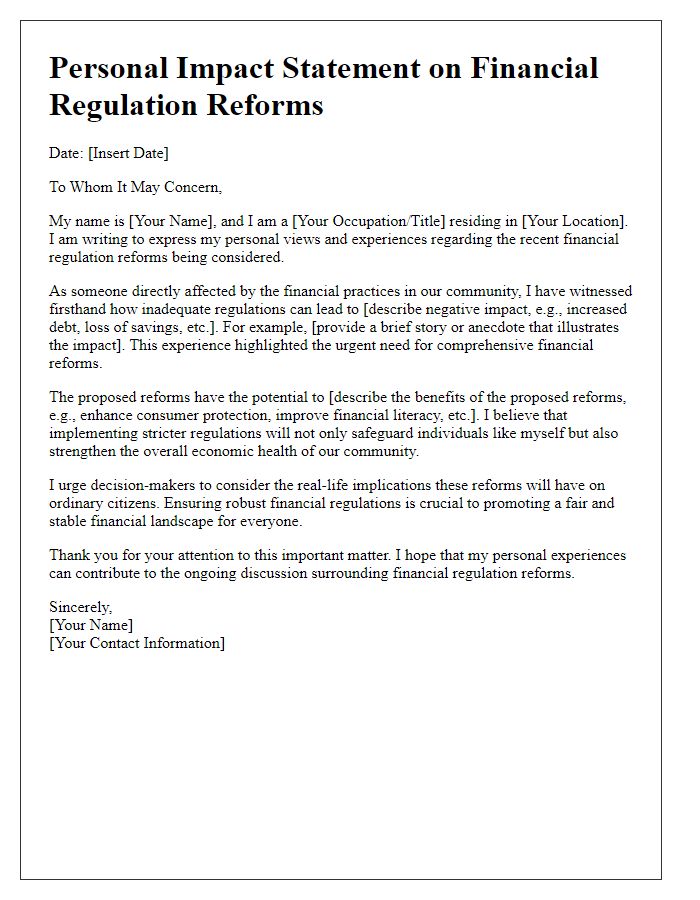
Letter template of endorsement from a financial institution on regulation reforms.
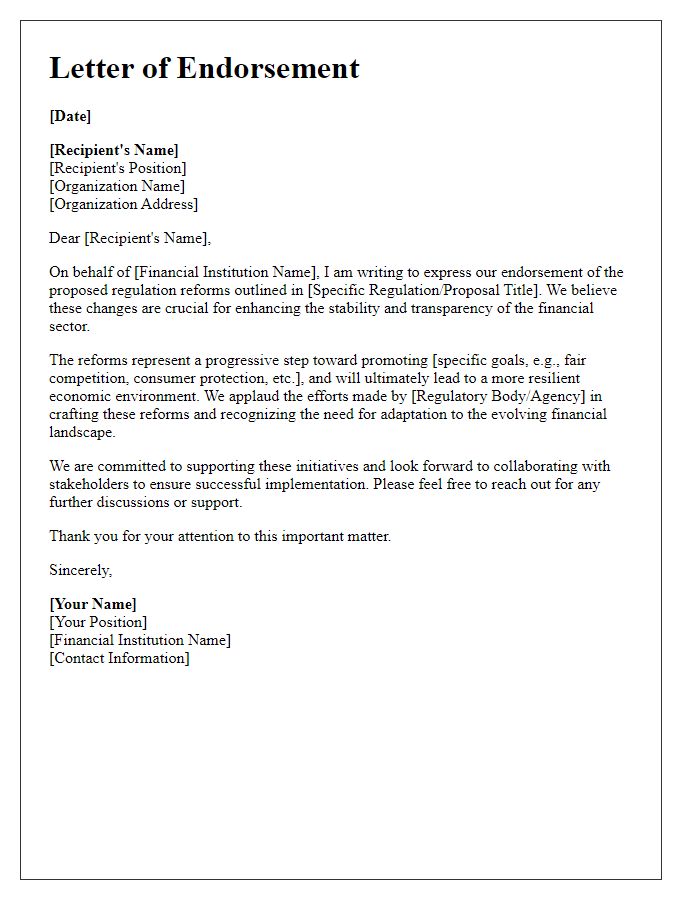
Letter template of public commentary on proposed financial regulation reforms.
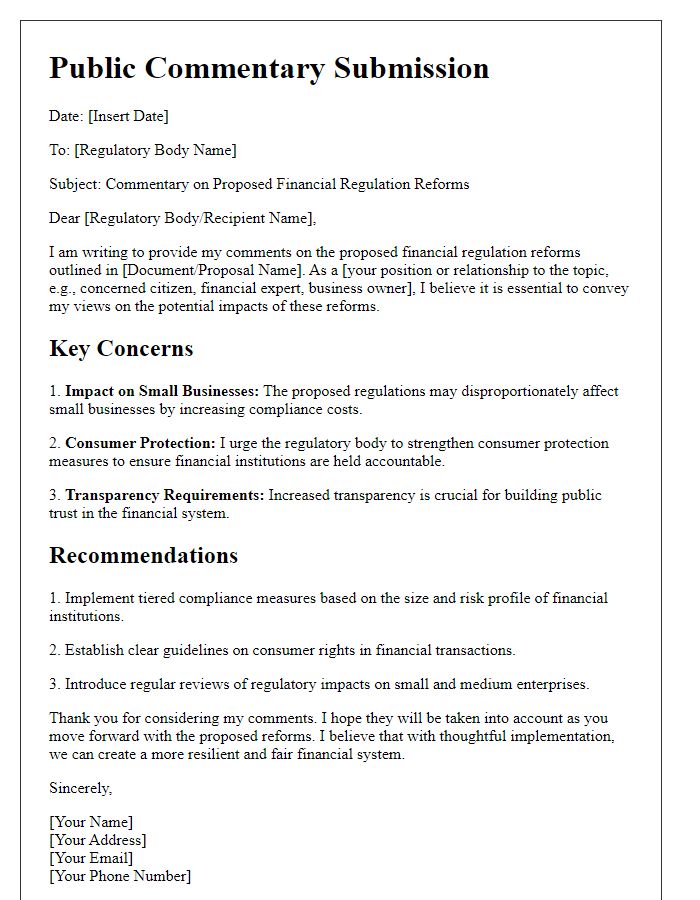
Letter template of a stakeholder meeting invitation regarding financial regulation reforms.
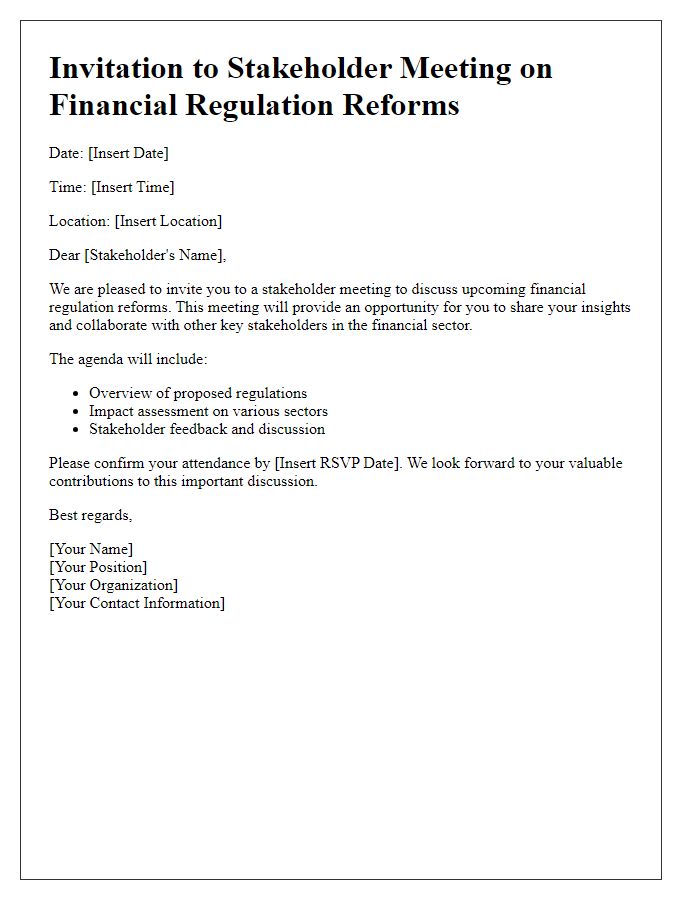

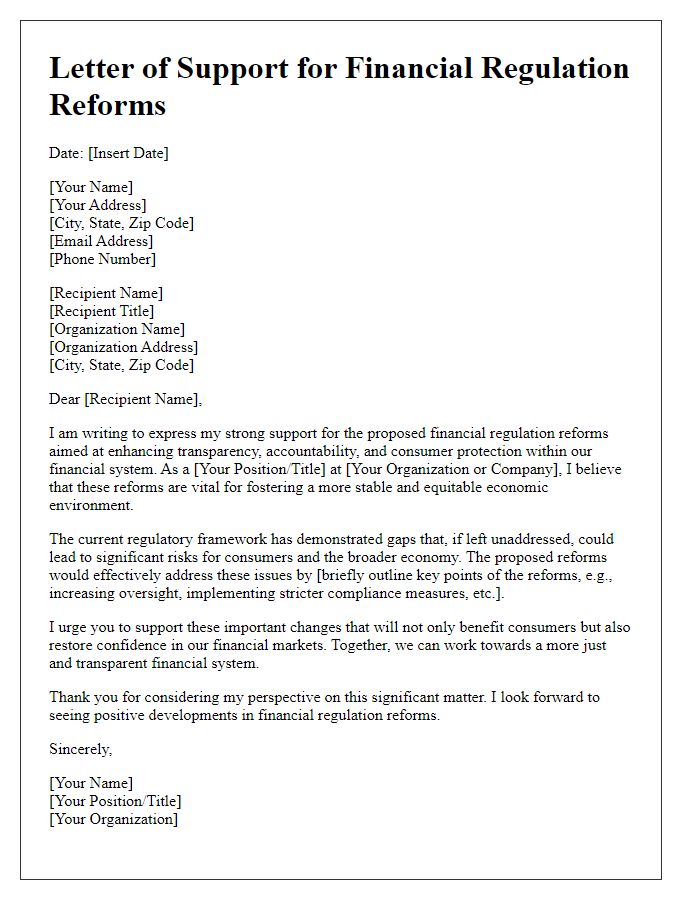
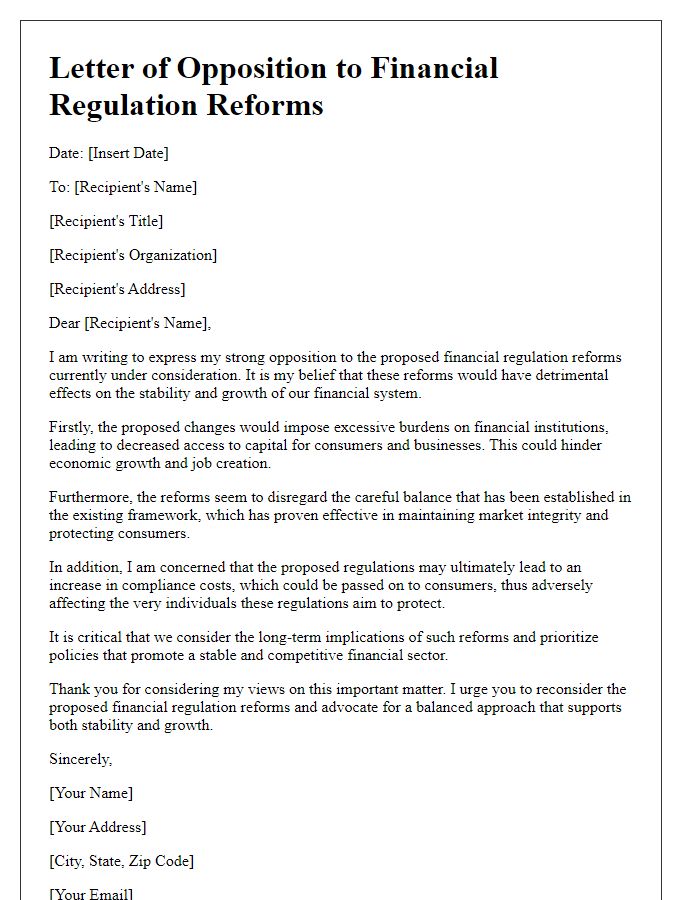
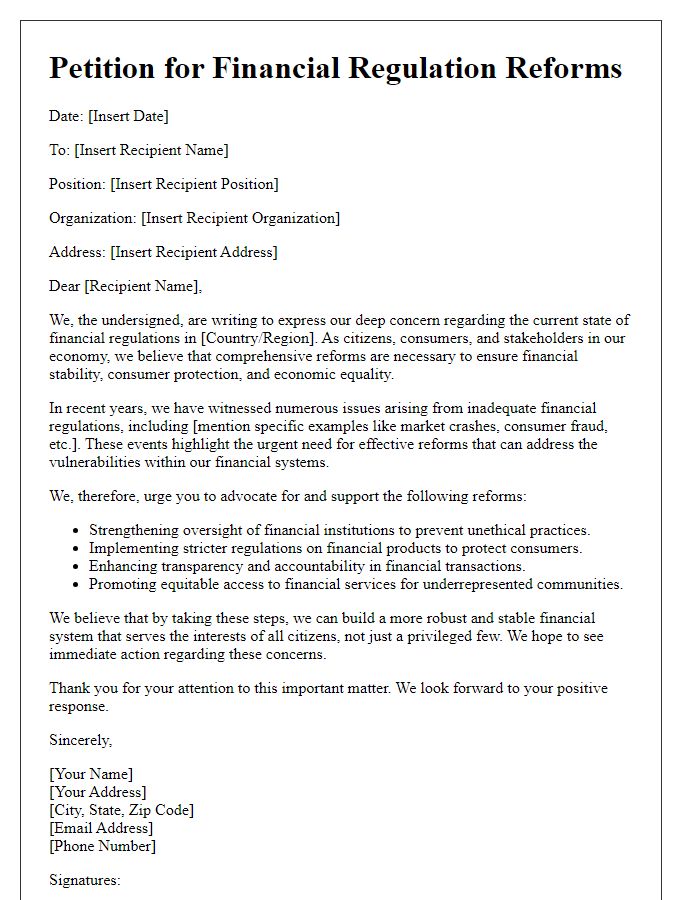



Comments